In this article we will talk about such a little plant common in our gardens like Limanhanges. This is a beautiful annual white-lemon flower with carved petals and a pleasant aroma. The British is called Limanhanges Glazuny, and our compatriots of Pennom Lugovy. The plant is unpretentious, it is enough for him to just care, but there are several nuances relating to the breeding, care and landing of Limnantes. We will tell about them in detail below.
Limanhanges: Plant Botanical Description
Limanhanges refers to the number of annual plants belonging to the family of liman. For the first time, this beautiful combing annual was discovered in North America. This country is considered a homeland flower.
Limanhanges is the Greek plant name. If you translate this word into Russian, the flower will be called "blooming in a wet ditch". So, because Limanhanges grows on a swampy terrain, in a ravine and a hollow in the form of a neat and compact bush, which can reach altitude only 25 cm.
Limanandes has a very gentle inflorescence, the diameter of which is only 2.5 cm. The core is painted into a lemon rich color, and the edging of the petals is snow-white. Although other varieties of this plant can be painted in pink, and in completely yellow colors. The fragrance of Limanandes is very sweet, so there is always a swarm of bees and butterflies.
Limanhanges: Photo
Flower Limanhanges: types and varieties
Limanhanges is not a multi-shaped plant. In nature, there is most often one species - Limnantes Douglas. Such a name of the plant gave a scientist Botanist David Douglas, because he was he who found him, staying in the west of the United States. This is a flower that grows perfectly and develops even in clay soils. He has 4 varieties:
- Limanhanges Douglas Nivea - a flower with snow-white petals growing in the California Mountains.
- Limanhanges Douglas Rosie - a flower with snow-white petals and pink streaks growing in the California Valley.
- Limanhanges Douglas Sulfuria - a flower with yellow petals growing near the bay in San Francisco.
- Limanhanges Douglas Streat - a strong flower growing in Sierra Nevada.
Each variety of Limanandes Douglas differs from each other purely external signs. Complete features include such characteristics:
- Limanants solitary inflorescences, they have short flowers formed in the sinuses of the leaves.
- They bloom throughout the summer, and if you remove inflorescences on a bush, which have already been blowing, then the duration of flowering can be longer.
- Limanhanges are growing in areas that are not only well moistened, but also lit by the sun.
- Seeds in Limnanhanges type Douglas look like apple tree seeds in shape, only they are slightly smaller and darker.
Less often you can meet other types of Limanhanges:
- Limnantes Baker - he grows in California in places where very strong humidity.
- Limnantes Makuni is a view that is so rarely found in nature that it is already relating to the number of plants that are on the verge of extinction. It grows mainly in Canada.
- Limanhanges Wincalence is also a very rare view of Limnantes, which was discovered in California.
- Limanhanges Alba - California flower, which has white color. This Limanhanges is growing in grassy wet meadows. This species is found in Russia. Our compatriots call him Pennom Lugovy, because he covers a meadow territory like foam. From Limnantes Alba make cosmetic oil with a cold spin.
- Limnantes Lucius - a flower that grows in Northern California. It is often planted by hostesses in ornamental purposes on their homelifications.
Limanhanges: Cultivation of Seeds
The most common method of growing Limnantes is seed. It is thus most of the types of annuals breed. To begin with, we suggest to figure out how Limnanhanges landing is at open soil seeds:
- Select a flowerbed whose dimensions will be 40 per 40 cm.
- Well shry it, moisturize and drain.
- Make the wells in a depth of 2 cm. At least 3 seeds fall into each well. This rule should be followed, first of all, because there is no 100% guarantee that 1 seed has grown out.
- Make sure that the distance between the bushes was when they start blossoming. It is recommended to do wells at a distance of each other at 15 cm.
- After you are seeding seeds, you need to make sure that the soil is constantly wet. 2 weeks after sowing, the seedlings usually appear, and bloom begins, as a rule, after 2 months.
After you sing Limanhanges once, you will not need to do it for the next year again, despite the fact that the plant is annual. Limanhanges is a flower self-sowing.
Limanhanges: landing in open ground with seedlings
If you want, in your garden, Limanantez is for sure, it is better to first plant seedlings in greenhouse or in greenhouse. You will be guaranteed to grow strong and healthy seedlings, which you can land into the open ground. The main thing is to grow each bush seedlings in a separate pot or plastic cup so that the plant does not have to dive. This process and the process of transplanting Limantane is not very well tolerate, but the transshipment is the perfect version, as it allows you to transplant the flower into the ground, not disturbed the rhizome.
Below are the basic recommendations, how to hang out the seedlings of Limanhanges:
- In March-April, prepare the containers in which you will plant seeds, and the pallet where you put all the cups. Note that the pallet should be deep so that water can be pouring into it.
- The soil choose fertile, but the water permeable.
- Place in each cup of 3 seeds to a depth of 1 mm.
- Fill every cup with seeds aqueous solution with growth stimulants. This is an optional stage, but desirable. Water should be room temperature.
- Tighten the pallet with Loutrasil or spunbond.
- The room in which the seedlings will appear may be dark, the light for growing seeds is not needed. It is necessary to monitor the humidity of the soil and behind the room in the room (it should be room, since the plant is summer, low temperatures does not withstand). The minimum temperature at which Limanhanges - -2 ° C may grow.
- In May-June, you can transfer seedlings to a permanent place of growth by transshipment. You can immediately take a transshipment, but to put seedlings right in the pallets into the street so that it gradually got used to street conditions. As soon as the weather becomes stable warm, shelter from the pallet you need to remove and transplant seedlings.
Limanhanges: Basic reproduction rules
As we mentioned, the reproduction of Limanandes occurs in a seed way. We list you several basic rules that should be followed in the process of breeding Limnantes:
- The soil must be necessarily nutritious and well moistened. In no case can it be allowed that it is raw, otherwise the roots of Limnantes can rot.
- Earth should be either a squeezing or sheet (in a mix with sand). As a fertilizer during the planting process, you can add humus.
- After you make a landing, during the first 2 weeks it is necessary to abundantly water Limanhanges.
Features of the care of Limanhanges
Limanhanges refers to the number of plants that do not require special care. Wherever he grew up, he will not interfere with it, except for the lack of sufficient moisture and good lighting with sunlight. Here are some rules for the care of Limanhanges:
- Lighting. It is impossible to admit the formation of a half-tree over Limanhanges. If trees grow near him, lush shrubs, they should be trimmed.
- Mulching. After planting the seedlings of Limnanhanges in open ground, each bush is needed well to climb.
- Watering. Watering should be carried out every day into severe heat. Water buckets enough for one bush. If it is possible, it is better to install the water sprinkler so that the soil is constantly wet, but it has not been formed. Otherwise, the plant will begin to grow old and wither.
- Bloom. Flowers that beatflowers need to be removed so that the flowering of Limanandes continues until autumn, and the plant itself looked neat.
- Fertilizer. Once a month, stick to Limanhanges by a complex plant. This is not necessary, but gardeners who are important that their flowerbeds differ from neighboring lush flowering, it is recommended to introduce feeding.
- Pests. Limantals is invulnerable to pests, but fungus can develop if you root a plant. The best way to get rid of the fungus is to remove the infected bush until the rest are sick. Not yet infected bushes are recommended to be treated with fungicides.
Limanhanges: Application
Limanhanges applies, first of all, in decorative purposes. Having planted them in the flower beds with Iberis, Floxes and Brachikoms (these are all low-spirited plants), it turns out a very beautiful composition that will decorate the border, paths, a balcony and terraces.
Also Limanhangees is used in cosmetology. It makes oil with a unique chemical composition. It includes 12 fatty acids that prevent dry skin. Oil feeds it, moisturizes, restores after cuts and other effects on the skin. If the Limnantes oil is properly recycled, then you can get high-quality lubricants that are reminded by the structure with whale fat.
You can purchase Limnantes seeds in any specialized store. Do not miss the opportunity to prepare the seedlings of beautiful Limnanhanges to decorate their homefinding areas.

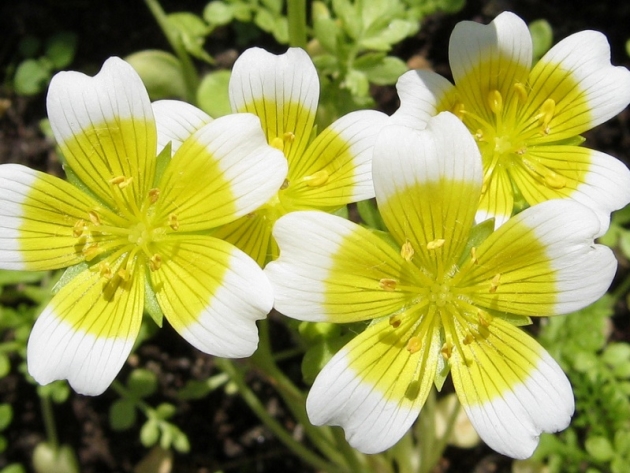
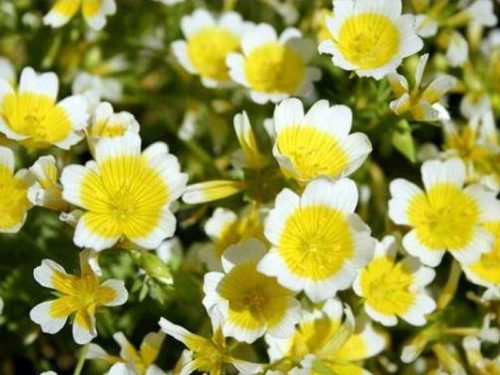
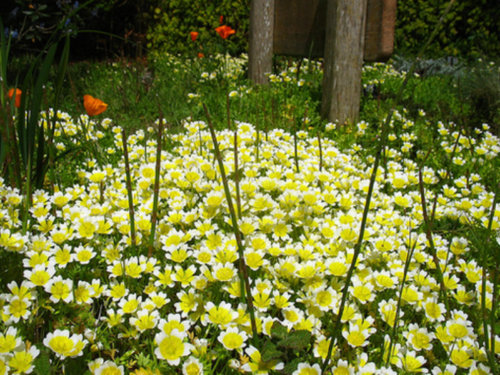


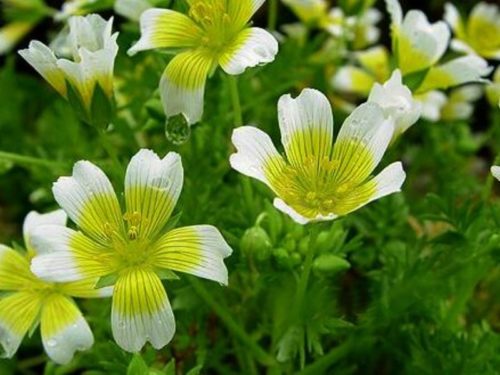
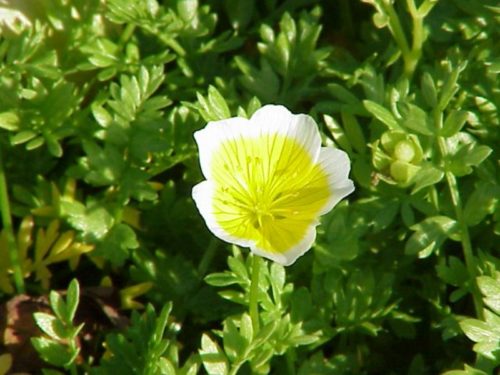
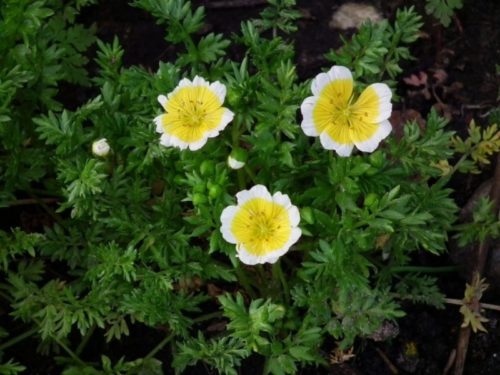
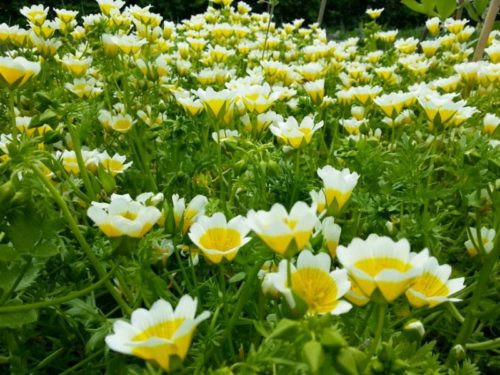
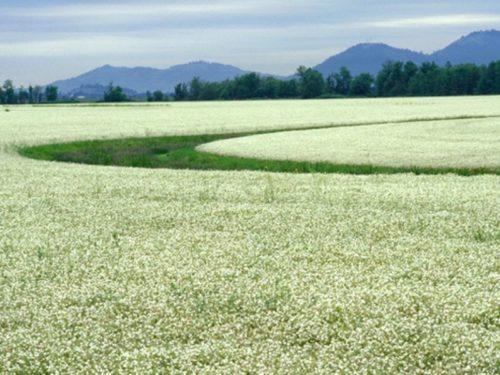












 Start a discussion ...
Start a discussion ...